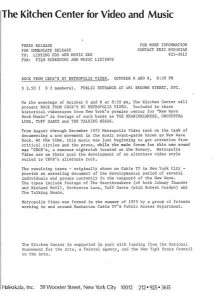Engaging Your Audience in 140 Characters or Less
 Ten years ago, no one would have guessed that businesses would have to master the art of writing for social media. But in this digital age of selfies and hashtags, learning how to write for social media has become more than just a good idea—it’s a necessity. So what can you do to engage your audience in a short social media post?
Ten years ago, no one would have guessed that businesses would have to master the art of writing for social media. But in this digital age of selfies and hashtags, learning how to write for social media has become more than just a good idea—it’s a necessity. So what can you do to engage your audience in a short social media post?
1. Establish a consistent voice.
The voice you use when writing for social media should be consistent across different social media sites and posts. Specifically, this voice should be positive and goal-oriented. Of course, it should also be personable and likable; you don’t want your writing to sound as if a robot could have written it. Add the appropriate amount of cheek to suit your audience, based on your targeted buyer personas, but remember that achieving your post’s goal is more important than getting a laugh. (Unless, of course, you happen to be a stand-up comedian or someone else whose brand depends on humor. In that case, being funny is pretty essential. But, you know, no pressure or anything.)
What should your post’s goal be, you ask? Well, generally speaking, a social media post should aim to educate, entertain, or redirect. You can give your readers knowledge, give them a smile, or send them to another page that aims to accomplish either the first or the second goal.
2. Appeal to your readers’ needs.
As with most content marketing principles, completing this step will be much easier if you have a good idea of your target audience. Linking to posts or sharing information that will actually help your readers achieve something will garner respect for your business. Social media sites are great tools for attracting new visitors to your site and raising brand awareness, but people are not going to follow you on Facebook if all you post about is how great your business and its services are. Writing for social media should be a social affair—don’t just talk about yourself! Providing your reader with useful (or entertaining) information is a great way to develop trust in your brand. It’s okay to redirect readers to your home site sometimes, but if every post does this, what reason does anyone have to follow you? They might as well just skip the middleman and go straight to your main site. Your social media pages need to have value of their own to make people stick around.
3. Choose the ideal length.
When it comes to writing posts of ideal lengths, the secret is that there is no secret. Disappointing, I know, but true. Determining the perfect length for a post is one of the many challenges of writing for social media. Different sites lend themselves to different lengths, which means that each post should be catered to the site you are posting it on. A hashtag-heavy, 96-character post may triumph on Twitter, but it’s likely to annoy your followers on Facebook. There are some guidelines about the best length for each medium, but the general rule to follow is this: convey your message and tone as concisely as possible within the confines of that particular medium. Don’t be long-winded, and don’t be vague: say what you need to say, then stop talking.
4. Keep your posts error-free.
Unless your goal is to lose followers or to lose the respect of the followers you already have, you need to make sure your social media content is completely free of errors. I don’t think I need to explain why it is unacceptable for a 140-character post to have a mistake in it. Take yourself and your business seriously by checking your social media posts before they go live. If you need to enlist the help of a proofreading service, do so.
Clearly, writing for social media is not an exact science. A basic understanding of the principles behind content marketing is required if you are going to master the perfect attention-grabbing 140-character (or less) post.
Image source: Wilfred Iven/Stocksnap.io
(175)








